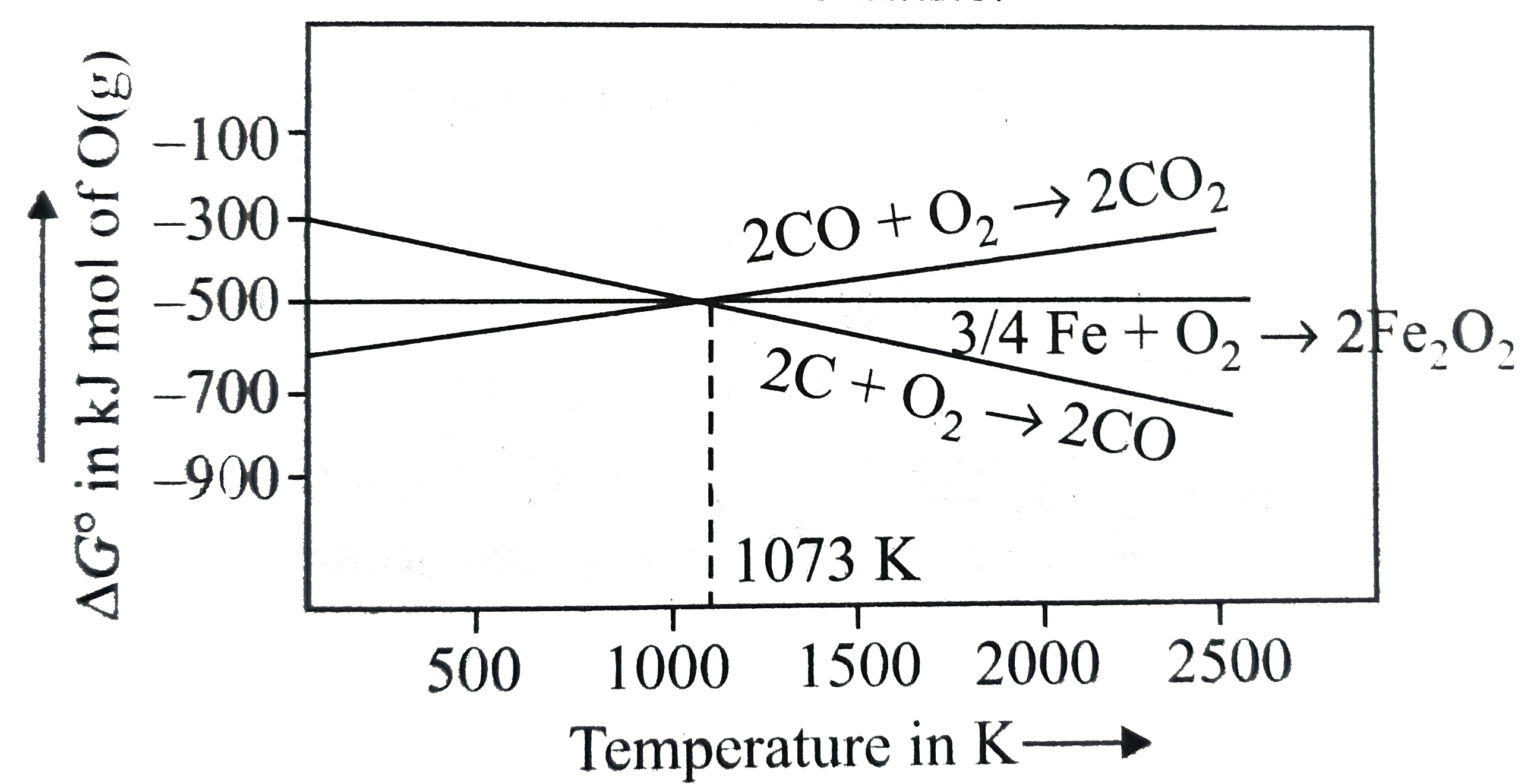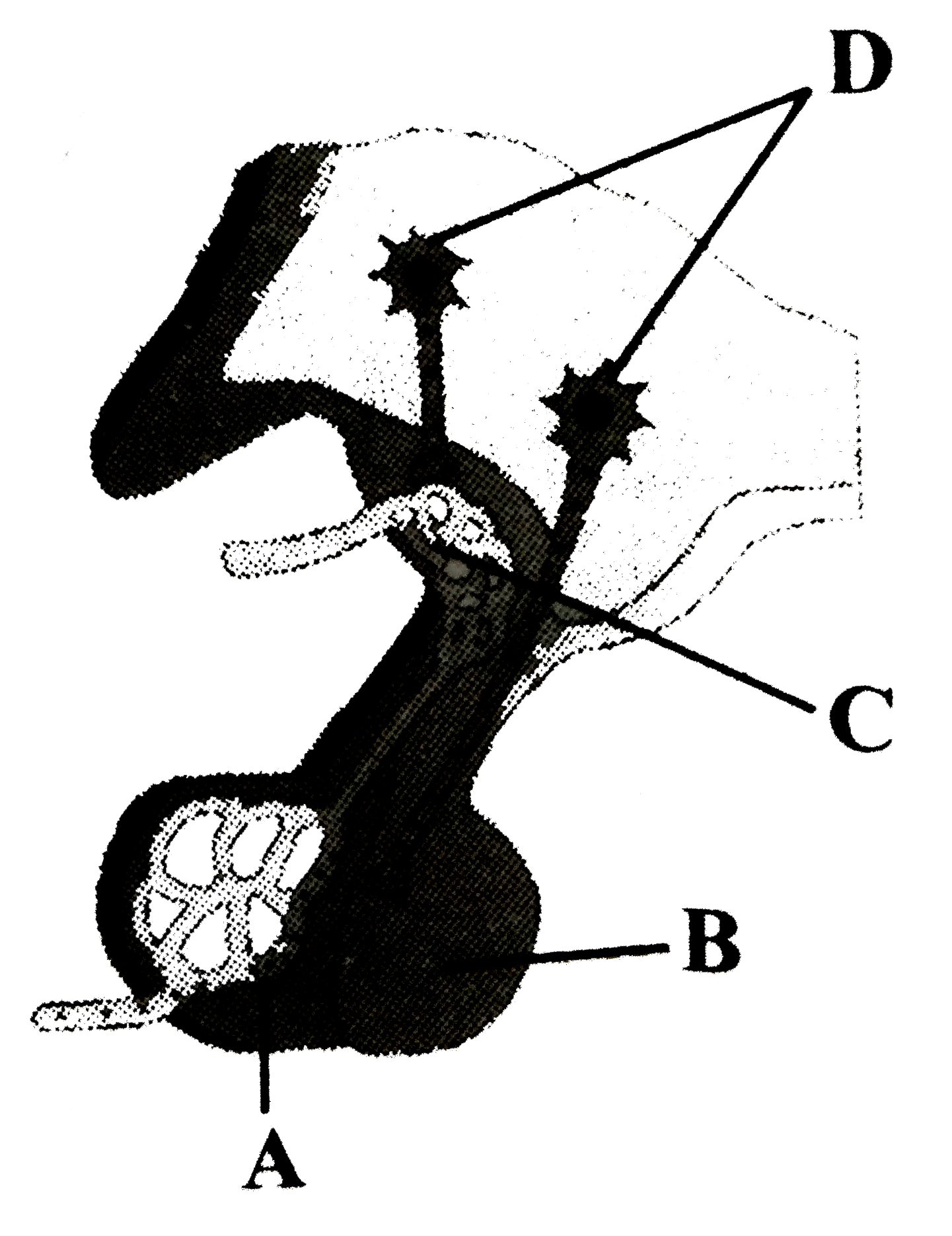Which of the following is correct regarding following diagram or reduction of haematite.

Temperature in K→ Ellingham diagram fro the reduction of haematite
A
Below 1073K,C is batter reducing agent
B
Below 1073K,CO is batter reducing agent
C
Above 1073K,C is batery reducing agent
D
Haematite can't be reduced by C or CO.
Video Solution
Text Solution
The correct Answer is:B
Bacause below 1073K Gibbs enegry of formation of Fe2O3 is −500 which is more than Gibbs energy of formation of CO2. Thus CO2 is more stable below 1073K. As a result Fe2O3 is reduced by CO.
Fe∘O3+3CO1073K−−−→2Fe+CO2
|
Updated on:21/07/2023
Topper's Solved these Questions
- BOOK - A2ZCHAPTER - GENERAL PRINCIPLES AND PROCESS OF ISOLATION OF METALSEXERCISE - Metallurgy Of Cu, Fe, Ag, Al, Zn, And Au97videos
GENERAL PRINCIPLES AND PROCESS OF ISOLATION OF METALS
- BOOK - A2ZCHAPTER - GENERAL PRINCIPLES AND PROCESS OF ISOLATION OF METALSEXERCISE - Section B - Assertion Reasoning17videos
GENERAL PRINCIPLES AND PROCESS OF ISOLATION OF METALS
- BOOK - A2ZCHAPTER - ELECTROCHEMISTRYEXERCISE - Section D - Chapter End Test30videos
ELECTROCHEMISTRY
- BOOK - A2ZCHAPTER - MOCK TESTEXERCISE - Mock Test 245videos
MOCK TEST
Similar Questions
Knowledge Check
- Question 1 - Select One
Which of the following is correct regarding the given diagram ?
 AOxytocin and vasopressin are synthesised by BBMelatonin are synthesised by ACA is neurohypophysis and B is adenohypophysisDGnRH is released in C
AOxytocin and vasopressin are synthesised by BBMelatonin are synthesised by ACA is neurohypophysis and B is adenohypophysisDGnRH is released in C - Question 2 - Select One
Which of the following statement is incorrect regarding Ellingham diagram?
AIt represents ΔG with temperatureBIt can be used for oxides, sulphides and chloride oresCIt helps in predicting the feasibility of thermal reduction of an oreDA metal will reduce the oxide of other metals which lie below it in Ellingham diagram - Question 3 - Select One
Which of the following is not correct observation on Ellingham diagram ?
AA metal can reduce the oxide of other metal which lies above it in Ellingham diagram .BCO is more effective than C as a reducing agent below 710∘CCΔG∘ of metal oxides is higher than that of CO2 hence oxidation of metal suphides to oxides is not favourable.DNeed for conversion of metal sulphide to metal oxide before reduction can be explained thermodynamically.
Which of the following statements is correct regarding self reduction?
View SolutionWhich of the following statements is correct regarding self reduction?
View SolutionWhich of the following statements is correct regarding self reduction?
View SolutionWhich of the following in Mendius reduction ?
View SolutionWhich of the following is the best reductant?
View Solution

